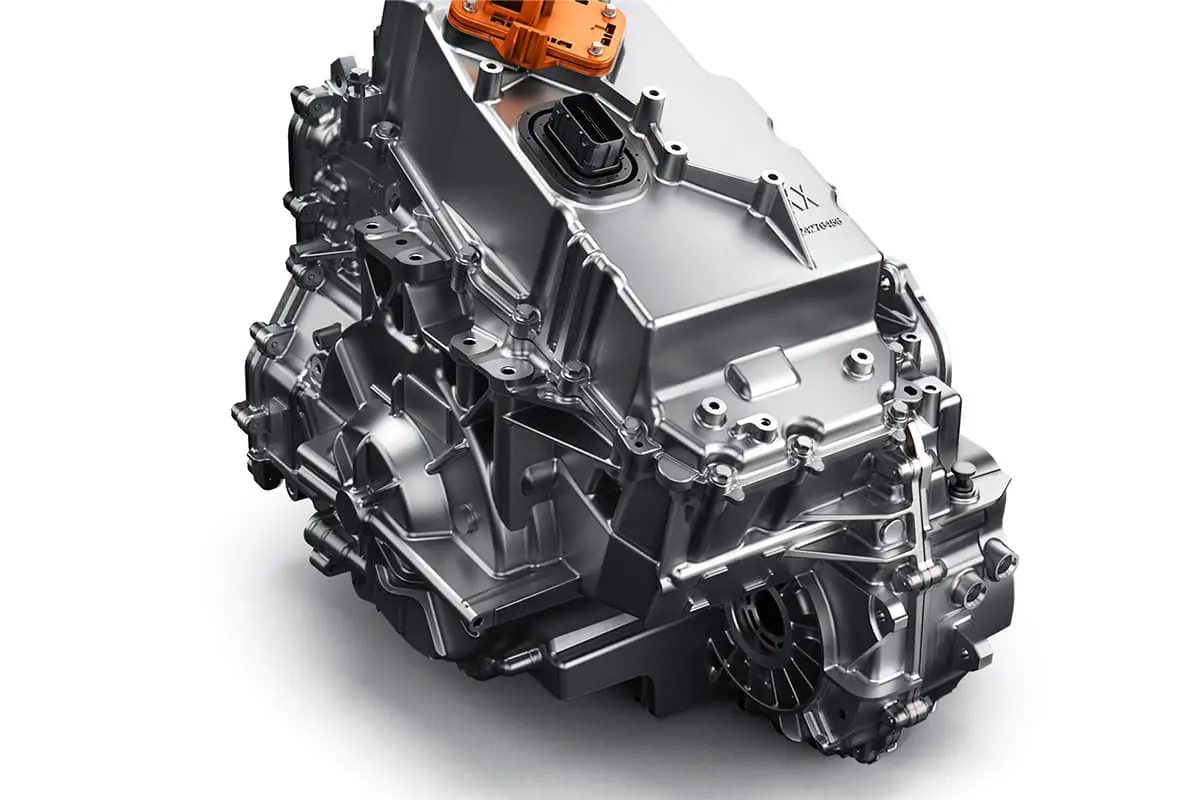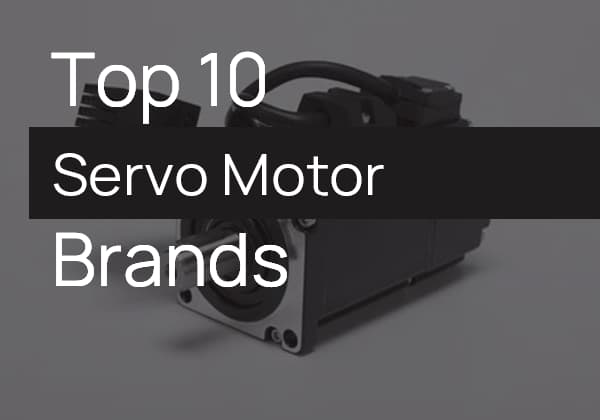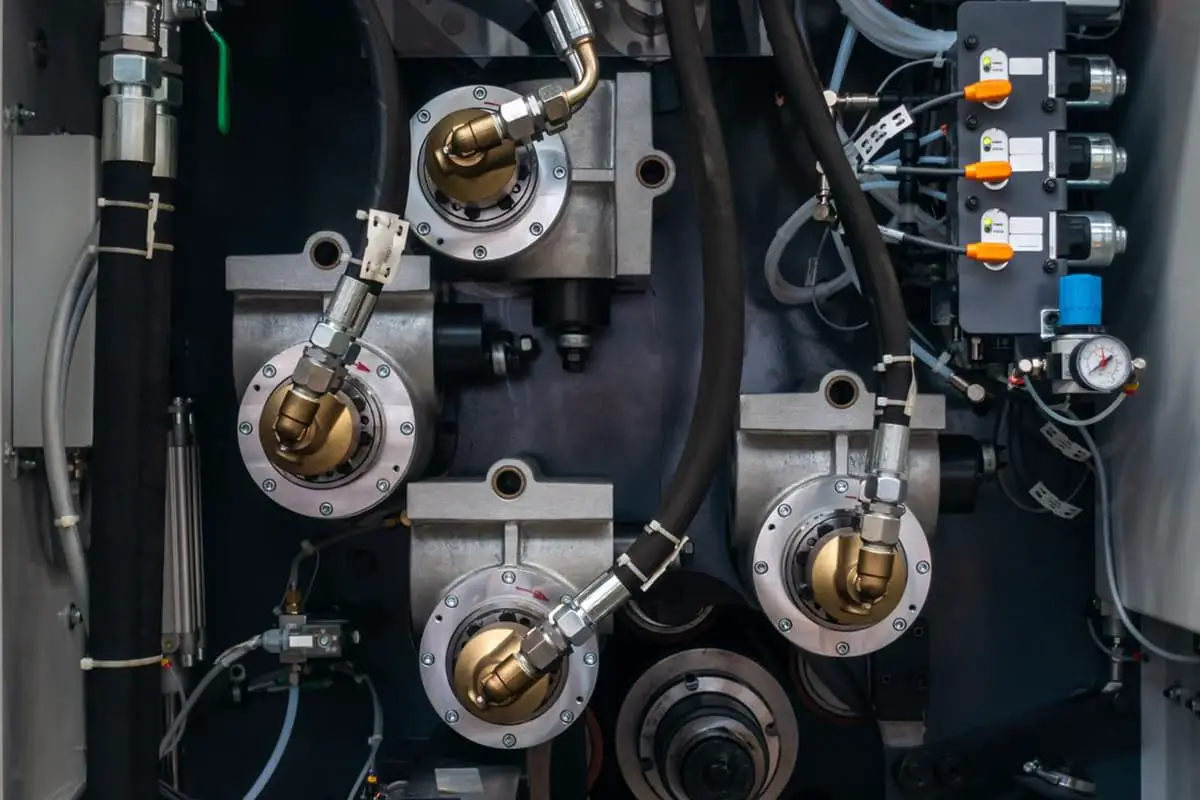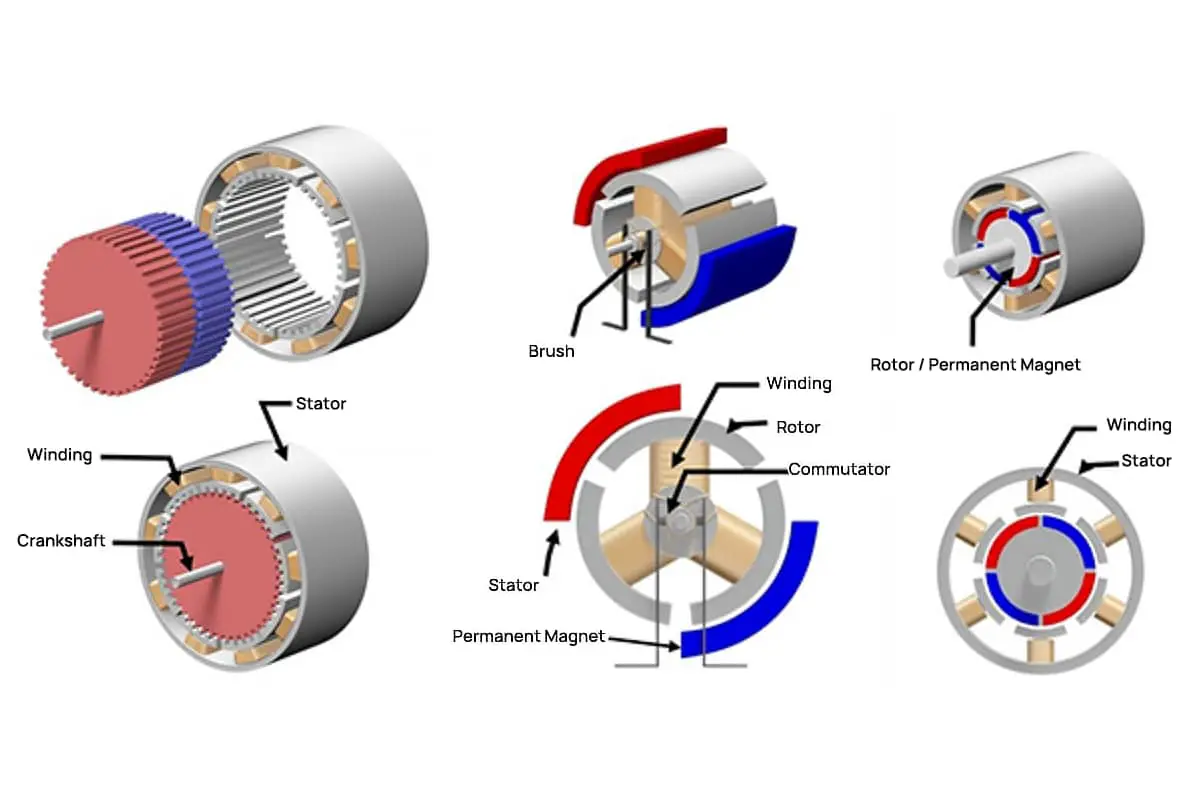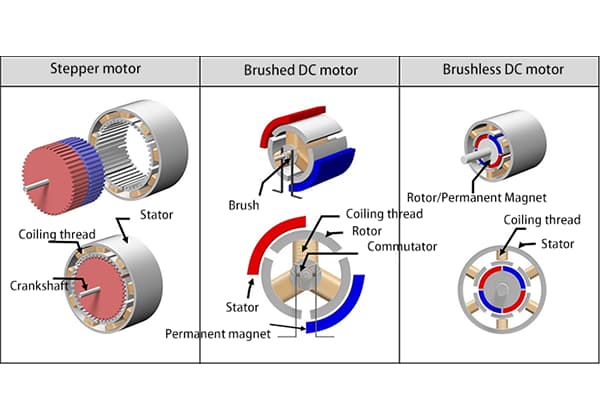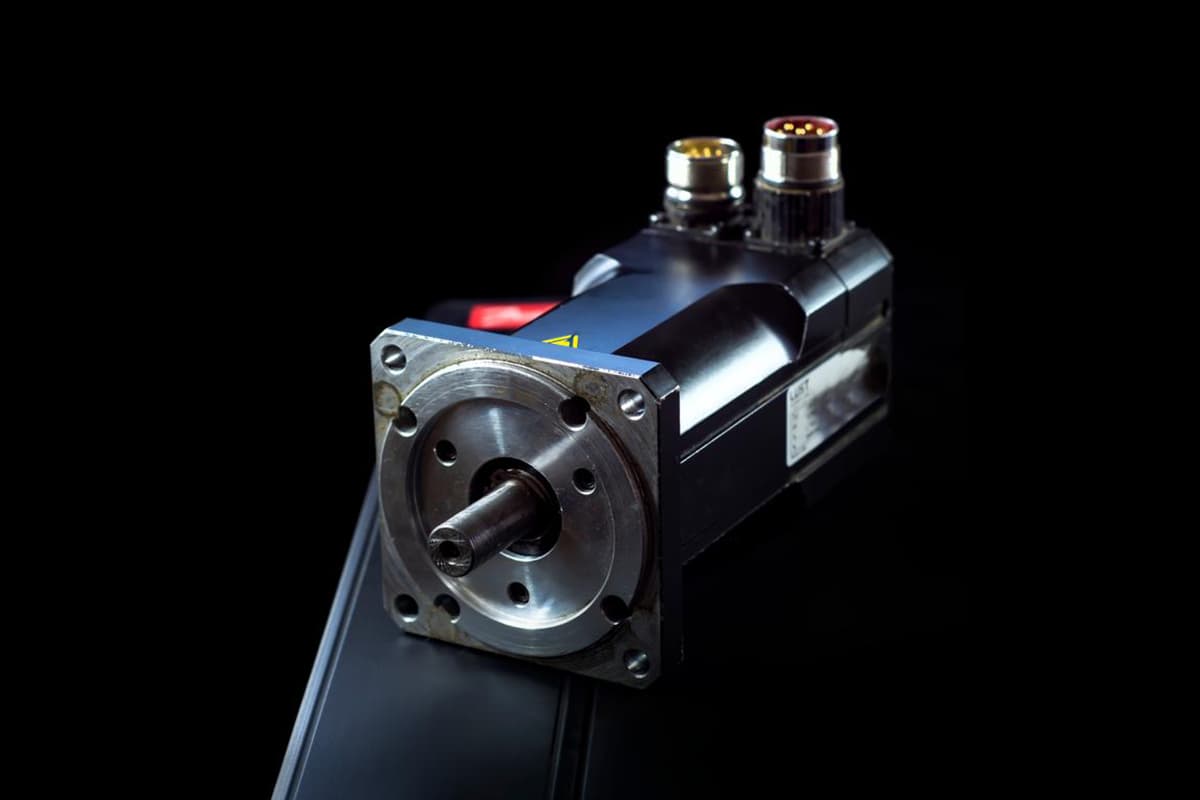
기차가 어떻게 선로 위에 떠 있을 수 있는지, 로봇이 어떻게 정밀한 움직임을 구현하는지 궁금한 적이 있나요? 이 글에서는 선형 모터의 원리, 유형, 고유한 장점을 설명하며 선형 모터의 매혹적인 세계를 소개합니다. 이 모터가 속도, 정밀도, 효율성으로 어떻게 산업에 혁신을 가져오는지 알아보세요. 선형 모터가 어떻게 미래를 만들어가고 있는지 자세히 알아보세요!
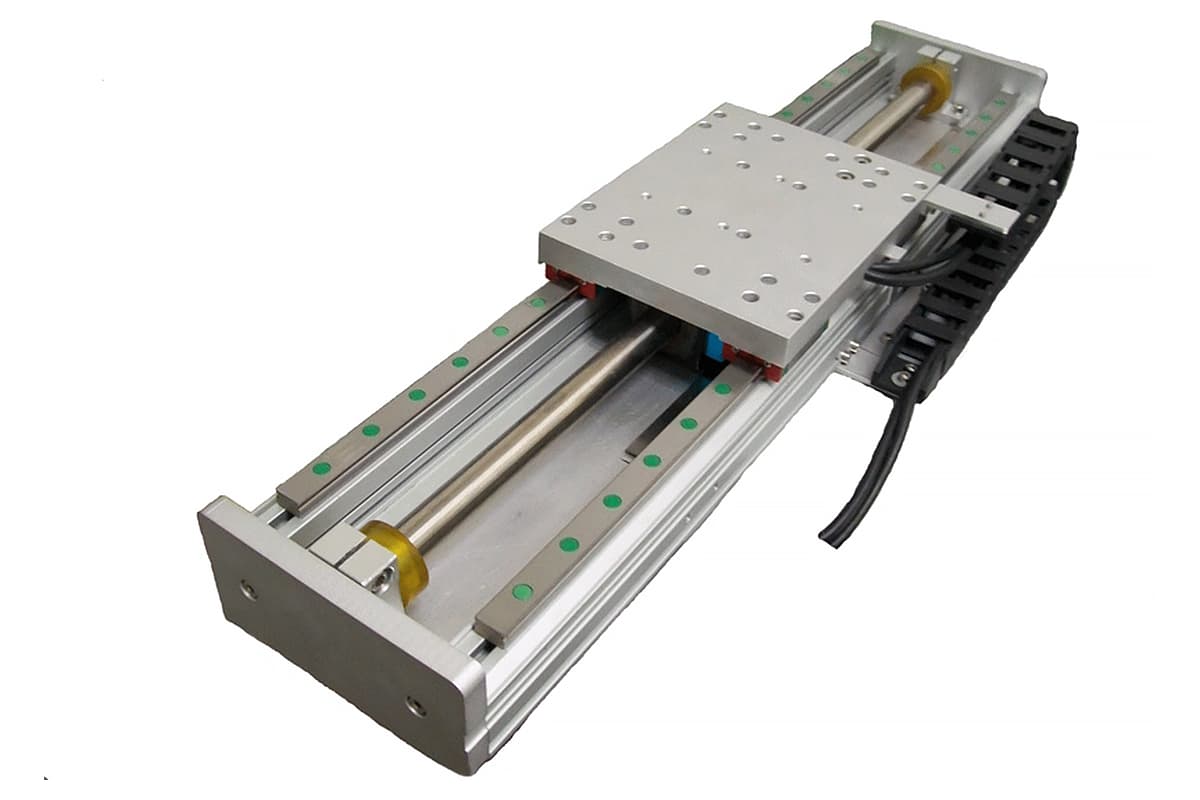
리니어 모터는 중간 변환 메커니즘 없이 전기 에너지를 선형 기계 운동으로 직접 변환하는 장치입니다. 선형 모터는 회전 모터를 방사형으로 잘라 평평한 평면으로 펼친 것으로 생각할 수 있습니다.
선형 모터 또는 선형 액추에이터라고도 하는 가장 일반적인 유형은 평판형, U채널형, 튜브형입니다. 일반적인 코일 구성은 3상이며 홀 효과 센서를 통해 브러시리스 위상 전환이 이루어집니다.

리니어 모터는 흔히 같은 원리로 작동하는 회전 모터로 간단히 설명할 수 있습니다. 포서(로터)는 에폭시 소재와 함께 코일을 압축하여 만들어지며, 자석 트랙은 강철에 부착된 자석(일반적으로 고에너지 희토류 자석)으로 구성됩니다.
모터의 포서에는 코일 권선, 홀 효과 센서 회로 기판, 열 조절기(온도를 모니터링하는 온도 센서) 및 전자 인터페이스가 포함됩니다. 로터리 모터의 경우, 포서와 고정자는 포서를 지지하고 움직이는 부품의 공극을 유지하기 위해 회전 베어링이 필요합니다. 마찬가지로 리니어 모터에는 다음이 필요합니다. 선형 가이드 를 사용하여 자석 트랙에서 생성된 자기장에서 포서의 위치를 유지합니다.
로터리 서보 모터의 샤프트에 장착되어 위치를 피드백하는 엔코더와 마찬가지로 리니어 모터에는 부하 위치를 직접 측정하는 리니어 엔코더가 필요하므로 부하 위치 정확도를 향상시킬 수 있습니다.
리니어 모터의 제어는 로터리 모터의 제어와 유사합니다. 브러시리스 로터리 모터와 마찬가지로 포서와 스테이터는 기계적으로 연결되지 않습니다(브러시리스).
회전자가 회전하고 고정자가 고정되어 있는 로터리 모터와 달리 선형 모터 시스템에서는 자석 트랙 또는 스러스트 코일이 움직일 수 있습니다(대부분의 포지셔닝 시스템에는 고정 자석 트랙과 움직이는 스러스트 코일이 있습니다). 움직이는 스러스트 코일이 있는 모터에서는 스러스트 코일의 무게와 부하가 매우 작습니다.
하지만 이를 위해서는 매우 유연한 케이블과 관리 시스템이 필요합니다. 움직이는 자석 트랙이 있는 모터에서는 하중뿐만 아니라 자석 트랙의 무게도 감당해야 하므로 케이블 관리 시스템이 필요하지 않습니다.
리니어 모터와 로터리 모터 모두 유사한 전기 기계 원리가 사용됩니다. 회전 모터에서 토크를 생성하는 동일한 전자기력이 선형 모터에서 선형 추력을 생성합니다.
따라서 리니어 모터는 로터리 모터와 동일한 제어 및 프로그래밍 가능한 구성을 사용합니다. 리니어 모터의 모양은 애플리케이션의 특정 요구 사항과 작업 환경에 따라 평판, U채널 또는 튜브형이 될 수 있습니다.
선형 모터의 작동 원리는 크게 두 가지 유형으로 분류할 수 있는데, 하나는 자기장 내에서 무버(움직이는 부분)가 이동하는 자기장 선형 모터와 자기장 내에서 무버가 정지한 채 전자기력에 의해 추진되는 전자기 추력 선형 모터가 있습니다.
(1) 자기 부상 선형 모터
자기 부상 선형 모터의 원리는 자기장을 사용하여 무버를 공중에 매달아 비접촉식, 마찰 없는 동작을 달성하는 것입니다. 이러한 유형의 선형 모터에는 주로 영구 자석 동기 선형 모터(PMSLM)와 전자기 서스펜션 선형 모터(EMSLM)가 포함됩니다.
PMSLM은 영구 자석에서 생성되는 자기장과 고정자의 자기장 사이의 상호작용을 이용해 무버를 정지시킵니다. PMSLM의 주요 장점은 구조가 간단하고 비용이 저렴하며 안정적으로 작동한다는 점입니다.
그러나 영구 자석의 존재로 인해 자기장 강도가 제한되어 상대적으로 추진력과 속도가 낮아집니다.
EMSLM은 전자기장에 의해 생성된 자기 부상력을 이용해 무버를 매달아 놓습니다. 자기장 강도가 높기 때문에 상대적으로 더 큰 추진력과 속도를 낼 수 있다는 것이 주요 장점입니다. 하지만 EMSLM은 구조가 더 복잡하고 비용이 더 높습니다.
(2) 전자기 추력 선형 모터
전자기 추력 선형 모터는 전자기력을 사용하여 자기장 내에서 무버를 이동시키는 방식으로 작동합니다. 이 범주에는 주로 교류 선형 모터(ACLM)와 직류 선형 모터(DCLM)가 포함됩니다.
ACLM은 교류에 의해 생성된 전자기력으로 구동되어 무버를 움직입니다. ACLM의 주요 장점은 단순성, 저렴한 비용, 안정적인 작동입니다. 하지만 교류의 특성으로 인해 추력과 속도가 제한됩니다.
DCLM은 직류로 생성된 전자기력을 사용하여 무버를 움직입니다. DCLM의 주요 장점은 더 높은 추력과 속도이지만, 구조가 더 복잡하고 구현 비용이 더 많이 든다는 점입니다.
실용적이고 경제적인 리니어 모터가 나오기 전에는 볼 나사, 롤러 나사, 벨트 또는 풀리를 사용하여 모든 직선 운동을 로터리 기계에서 변환해야 했습니다. 많은 애플리케이션, 특히 무거운 하중과 수직 구동축을 사용하는 애플리케이션의 경우 이러한 방법이 여전히 가장 좋습니다.
그러나 리니어 모터는 초고속 및 초저속, 높은 가속도, 유지보수가 거의 필요 없고(접촉 부품 없음), 고정밀, 백래시가 없는 등 기계식 시스템에 비해 많은 고유한 장점을 가지고 있습니다.
기어, 커플링, 풀리 없이 모터만으로 선형 동작을 완성하면 많은 애플리케이션에서 성능을 저하시키고 기계 수명을 단축시키는 불필요한 부품을 제거할 수 있습니다.
1) 간단한 구조.
튜브형 리니어 모터는 중간 변환 메커니즘 없이 직접 선형 모션을 생성하므로 구조가 크게 단순화되고 모션 관성이 감소하며 동적 응답과 위치 정확도가 크게 향상됩니다. 또한 신뢰성을 높이고 비용을 절감하며 제조 및 유지보수를 간소화합니다. 1차측과 2차측이 직접 메커니즘의 일부가 될 수 있는 독특한 조합으로 이러한 장점을 더욱 돋보이게 합니다.
2) 고속 선형 모션에 적합합니다.
원심력의 제약이 없기 때문에 일반 재료로 더 빠른 속도를 구현할 수 있습니다. 또한 공기 또는 자기 쿠션을 사용하여 1차측과 2차측 사이의 간격을 유지하면 운동 중 기계적 접촉이 없어 마찰이나 소음이 발생하지 않습니다. 즉, 변속기 부품이 마모되지 않아 기계적 손실이 크게 줄어들고 케이블, 강철 로프, 기어, 풀리에서 발생하는 소음을 방지하여 전반적인 효율을 높일 수 있습니다.
3) 기본 와인딩의 높은 활용도.
관형 선형 유도 전동기의 경우, 1차 권선은 팬케이크 모양으로 끝 권선이 없어 권선 활용도가 높습니다.
4) 가로 가장자리 효과 없음.
횡단 효과는 횡단 단절로 인해 경계에서 자기장이 약해지는 것을 말합니다. 원통형 리니어 모터에는 횡단 단절이 없으므로 자기장이 원주 방향으로 고르게 분포합니다.
5) 일방적인 자기장을 쉽게 극복할 수 있습니다.
방사형 당기는 힘은 서로 상쇄되어 일방적인 자기 당김의 문제를 사실상 제거합니다.
6) 조정 및 제어가 쉽습니다.
전압 또는 주파수를 조정하거나 보조 재료를 변경하여 저속 왕복 작업에 적합한 다양한 속도와 전자기 추력을 얻을 수 있습니다.
7) 강력한 적응력.
리니어 모터의 기본 코어는 에폭시 수지로 캡슐화할 수 있어 부식 및 내습성이 우수하여 습하고 먼지가 많으며 유해한 가스 환경에서도 사용하기에 적합합니다. 또한 다양한 요구 사항을 충족하기 위해 다양한 구조로 설계할 수 있습니다.
8) 높은 가속도.
이는 다른 스크류에 비해 리니어 모터 드라이브의 중요한 장점입니다, 동기식 벨트및 기어 랙 드라이브.
효율성과 정밀성, 빠른 속도로 잘 알려진 리니어 모터는 다양한 분야에서 광범위하게 활용되고 있습니다.
교통 부문에서 리니어 모터는 주로 고속 열차, 지하철, 엘리베이터에 사용됩니다. 예를 들어 독일의 자기부상 열차는 자기부상 선형 모터를 사용하여 속도가 빨라지고 소음은 줄어듭니다.
또한 리니어 모터를 전기 자동차의 구동 시스템에 통합하여 성능을 향상시킬 수 있습니다.
산업 제조 분야에서 선형 모터는 주로 다음 분야에서 사용됩니다. CNC 기계 도구와 로봇. 예를 들어, 다음의 도구 공급 시스템은 CNC 공작 기계 리니어 모터로 구동되어 가공 정확도가 향상되고 응답 시간이 빨라집니다.
또한 리니어 모터는 자동화된 생산 라인의 컨베이어 벨트 및 핸들링 로봇에 적용되어 생산성을 높일 수 있습니다.
의료 분야에서 리니어 모터는 주로 CT 스캐너나 MRI와 같은 의료 영상 장치에 적용됩니다. 이러한 장치는 X-선이나 자기장의 스캔 범위와 속도를 정밀하게 제어해야 하는데, 리니어 모터는 높은 정밀도와 속도 제어를 제공하여 진단의 정확성과 효율성을 높여줍니다.
과학 연구에서 선형 모터는 입자가속기와 천체 망원경에서 두드러지게 사용됩니다. 예를 들어 대형 강입자충돌기(LHC)의 가속기 링은 선형 모터를 사용하여 더 높은 가속 성능과 안정적인 작동 성능을 구현합니다.
또한 리니어 모터는 천체 망원경의 자동 초점 시스템에 사용되어 관측의 정밀도와 효율성을 향상시킬 수 있습니다.

